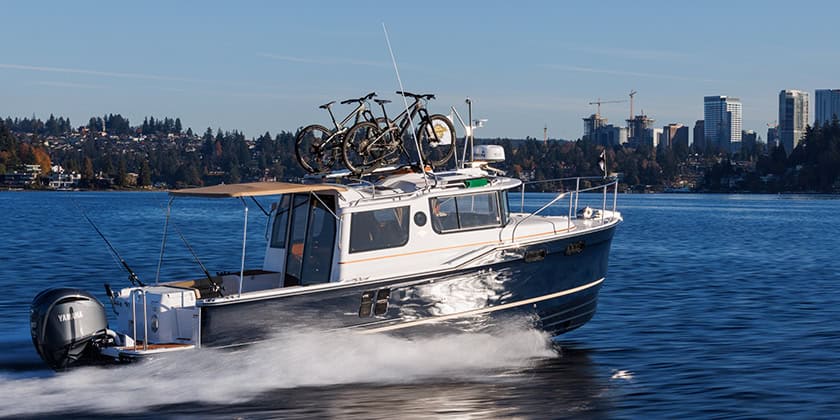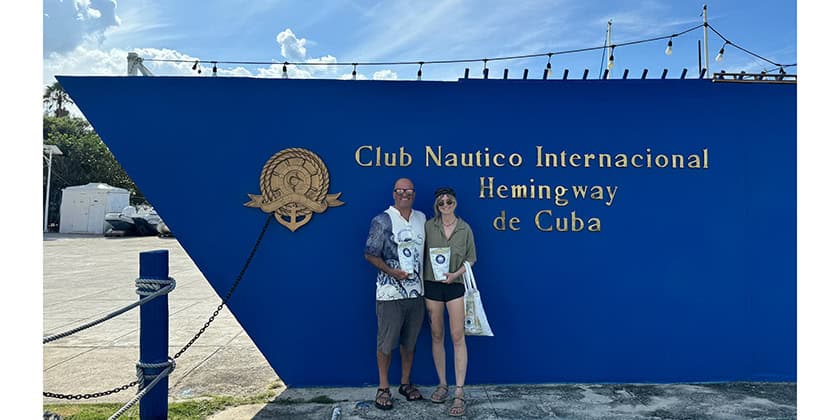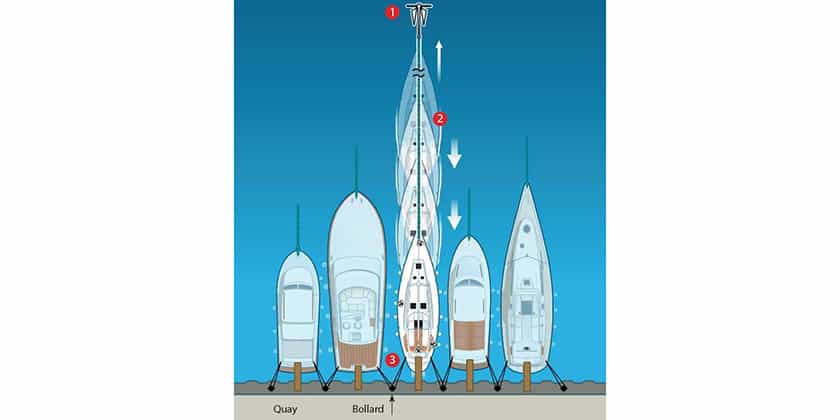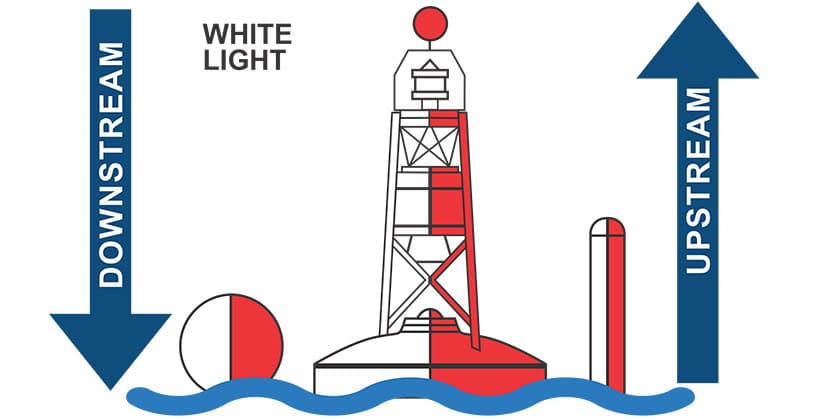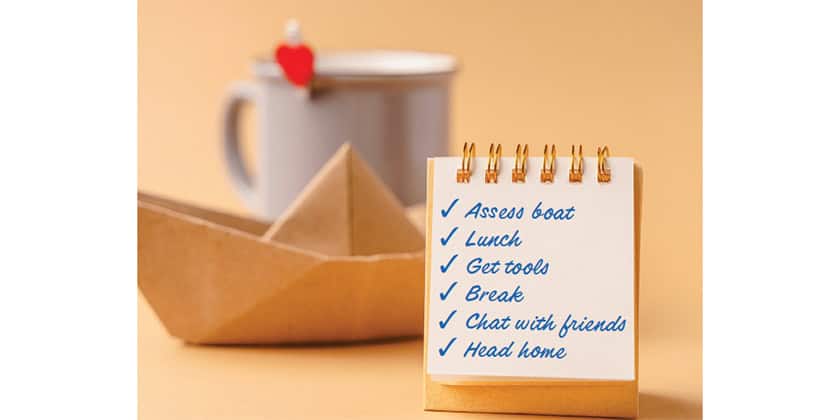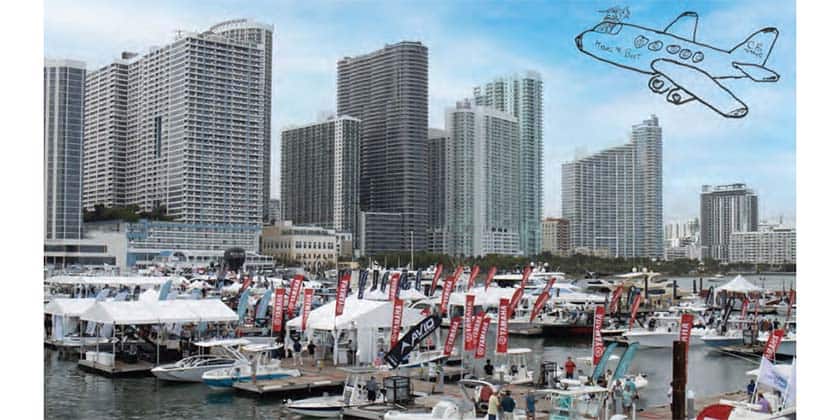Shark
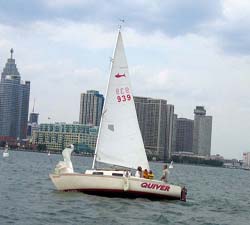 When George Hinterhoeller designed the Shark in 1959, he was looking for a boat that would “go like hell when the wind blew”. Growing up in Austria’s Salzkammergut region, Hinterhoeller was used to light displacement fin-keelers: fast, responsive and exciting.
When George Hinterhoeller designed the Shark in 1959, he was looking for a boat that would “go like hell when the wind blew”. Growing up in Austria’s Salzkammergut region, Hinterhoeller was used to light displacement fin-keelers: fast, responsive and exciting.
The few sailboats he found on Lake Ontario when he emigrated to Canada in 1952 had heavy displacement hulls. They were ponderous and had a bad habit of hobby-horsing in the rough Lake Ontario chop.
This young builder/designer was also bored by their performance. Announcing that he could build a boat that would sail circles around the rest, he retired to the shed behind his Niagara-on-the-Lake home and built Teeter Totter, a hard-chined 22-foot sloop made of plywood. This was the forerunner of the Shark, and when the breeze blew, it did go like hell. Its designer loved it and so did his friends.
There was an immediate demand for the nimble little boat 35 years ago, so that winter Hinterhoeller increased the design length to 24 feet and began building plywood Sharks in his shed. Hull number five was made for Bill O’Reilly who demanded that his boat be built of a substance relatively new to boatbuilding at that time: fibreglass. O’Reilly even offered to teach Hinterhoeller how to work with this new material. With glass, it took 18 man-hours to produce a hull, instead of the 128 hours devoted to a wooden hull. Better still, the glass boats were virtually maintenance-free. That made the Shark the affordable yacht and soon Hinterhoeller and his design were on their way to international success.
Since then, more than 2,500 Sharks have taken their place in the fleet, both in North America and in Europe. It rapidly became the biggest one design class on the Great Lakes, and today there are active groups on the east and west coasts, and in Montreal and Windsor. About 500 Sharks sail the large lakes of Austria, Switzerland, Germany and the waters of the Swedish archipelago.
There have been changes since Hinterhoeller first designed the boat, but all are cosmetic. The narrow hull, straight stem, long flat-run aft, fin keel and elliptical spade rudder help this racer to climb easily over its bow wave to achieve speeds in excess of 10 knots. The six-foot beam and doghouse accommodate a vee-berth and two quarterberths with sink, stove and ice box, making it a pocket cruiser with sitting headroom. It draws less than four feet, making it an ideal boat to tuck into anchorages denied to deep draft boats.
The Sharks success is due to its early racing record. In 1960, Hinterhoeller crewed to George Steffan, later the president of Mirage Yachts, in the Freeman Cup. They cleaned up with three first using brisk 18-knots winds to put a leg between them and their nearest competitor in each race. In the 1963 Freeman Cup, the Shark did it again. For small boats the course was from NOTL to Rochester, N.Y., 80 miles along the south shore of Lake Ontario. Back then, there were no spinnakers of genoas on the rig and the boat was sailed with main and jib only.
“We thought our biggest competition would be the Thunderbirds,” Hinterhoeller recalls. “But after the first surf, we knew that there would be no contest. We barreled down the course in seven hours, 44 minutes.”
In 1963, using a spinnaker on a close reach across Lake Ontario, Sid Dakin, on of the early Shark owners, sailed the Blockhouse Bay race from Toronto to Olcott, N.Y., with an adrenaline-pumping average speed of 10.2 knots, beating the 56-foot Innisfree on a boat-for-boat basis. Sidís speed boggled the minds of sailors unaccustomed to semi-displacement hulls. Racing boats come and go, but the Shark remains. With its swept-spreader rig and planing abilities, it is still an up-to-date racer. As with its low-aspect 7/8ths rig and heavy keel, it has a sea kindliness and seaworthiness that match its speed in a breeze.
Hinterhoeller admits that the Shark’s scantlings are better suited to a tank, but the proof of his wisdom in over-building the hull has been longevity. Virtually all of the 2,500 boats built in the past 35 years are still sailing and many of the first hulls off the line are winning their share of races.
The Shark is seen sailing happily in all major cruising waters, but some owners have taken them much farther afield. In 1972, Clive O’Connor, with his wife and two year-old, and guitar sailed their N from NOTL, Ont. to Melbourne, Australia. They arrived in good form, still speaking to each other and their boat, at last report, was still being used for research on Australia’s Great Barrier reef.
Randall Peart sailed his Shark from Ohio to Lake Erie and then the Bahamas, then back to Miami. From Miami, he sailed to his native England where he spent the winter before returning to North America by way of the Canaries. On his return, he reported no structural damage and no bulkheads adrift, but he did install a new set of gudgeons to replace the worn ones.
More recently, Bob Lush added a foot to the stern of his Shark to bring it up to the 25-foot size limit for the OSTAR single-handed transatlantic race. Lush’s biggest problem was getting stuck in the doldrums for too many mind-numbing days.
The Shark is a forgiving boat which makes it appealing boat for novices, but with 14 control lines, there are more than enough things to do for expert racers. An active class association tightly controls the racing in the fleet and ensures that all boats have the same minimum racing weight. Sharkscan is the class newsletter and is an excellent resource for sailors looking for a used boat, sails or equipment. The association is active at the international level, national and regional levels, giving Shark owners who are not a member of a local fleet a point of contact and an active racing programme. In addition to regular club races, there are provincial and national regattas each year. The highlight each season are the Worlds, a seven race series held in Europe or North America.










